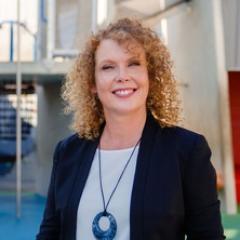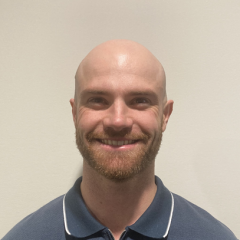Our goal is to improve the lives of children with an acquired brain injury by using child-friendly brain imaging methods and developing new therapies and treatments. Our KidStim lab is an advanced brain investigation and treatment facility in CHRC investigating the use non-invasive brain stimulation techniques to improve outcomes in children with neurological impairment.
Recovery from a brain injury is difficult. Imagine how much more difficult it is in childhood. At a time when so much learning, psychological and physical developments is occurring, a child with a brain injury is faced with relearning old skills as well as trying to learn new things and keep up with his or her friends at school. A brain injury can occur because of accidents, concussion, infection, brain tumours, stroke and other causes.
Our Concussion Recovery website offers help and information for families and clinicians about the care of children and adolescents with Concussion.
Visit the Concussion Recovery website
Our research program has a specific focus on recovery from traumatic brain injury and concussion. By increasing our understanding of brain recovery we can improve treatments and rehabilitation therapies.
Mild traumatic brain injury can be loss of consciousness and/or confusion and disorientation shorter than 30 minutes. Symptoms can also include headaches, fuzziness, dizziness, fatigue, and forgetfulness.
Paediatric concussion is a significant public health burden, sometimes referred to as a “silent epidemic”. It affects 1 in 30 children and adolescents before the age of 18 years. Children with concussion often report post concussive symptoms (PCS):
- Headaches
- Dizziness
- Mood disturbance
- Concentration difficulties that can impact learning
- Sleep disturbance
Post concussive symptoms are most severe immediately and soon after the incident but it can persist for weeks to months. Most recover easily, however, 15-25% of children with concussion have symptoms that last over a month with a significant impact on their school performance, friendships and family life. Understanding why some children recover quickly and other takes several months can help pave the way for new advances in treatment and rehabilitation therapies.
Learn more about our current research or email uq_abic@uq.edu.au.
The KidStim lab is the first lab in Australia to explore non-invasive brain stimulation (NIBS) in children with brain injury. It opens up an exciting new chapter in treatments for children with persistent problems after a brain injury, as well as children with mood and behavioural problems. NIBS can be used to investigate and treat persistent symptoms following a concussion:
- Traumatic Brain Injury
- Stroke
- Depression and mood problems
- Anxiety
- Autism
What is Non-invasive Brain Stimulation?
According to the International Neuromodulation Society, neuromodulation is technology that acts directly upon nerves. It is the alteration—or modulation—of nerve activity to produce natural biological responses by delivering electrical or pharmaceutical agents (drugs) directly to a target area.
The KidStim lab has state-of-the-art equipment to help us understand brain recovery after an injury including:
- Transcranial Magnetic Stimulation (TMS ) - A non-invasive procedure that uses magnets held on the outside of the head to stimulate nerve cells in the brain
- Repetitive Transcranial Magnetic Stimulation (rTMS) - Used to alter the responsiveness of groups of neurons in the brain. For example, it can be used to improve function in stroke and help depression
- Theta Burst Stimulation (TBS) - Similar to rTMS, TBS is being explored as a faster and easier option to rTMS
- Neuronavigation - Helps us to accurately track brain function back to your MRI. It helps the accurate placement of the TMS magnets to stimulate specific brain regions
- Transcranial direct current stimulation (tDCS) - A new technology showing promise in rehabilitation: it delivers low levels of current to improve brain function
- High-Density Electroencephalography (HD EEG) - Provides high resolution pictures and connectivity maps of brain activity
- Functional Near-Infrared Spectroscopy (fNIRS) - Using light to show changes in brain blood oxygenation during activities, fNIRS may be useful to track response to treatments
The KidStim Lab will be using Transcranial Magnetic Stimulation (TMS) equipment to measure activity and function of specific brain circuits. It uses brief magnetic pulses to stimulate nerve cells and change function in a selected part of the brain. The MRI-strength magnetic field is delivered from a coil placed over the scalp and a changing magnetic field is used to cause electric current to flow via electromagnetic induction. The KidStim laboratory will also be utilising neuronavigation equipment. This technology acts like a GPS system to guide or "navigate” areas of the brain so that we can accurately target TMS treatment.
To learn more about upcoming studies in the KidStim lab or if you are interested in conducting research in the KidStim laboratory or would like to learn more about collaborating on research, please contact uq_abic@uq.edu.au.
Browse all publications by Professor Karen Barlow.
Selected publications
This systematic review concisely and meaningfully synthesizes a large heterogenous body of research relating to the association between attention and brain connectivity to identify clear trends in traumatic brain injury (TBI) and stroke. The review found greater structural and functional connectivity within and between executive, salience, and default mode networks (DMNs) is related to greater attention after TBI, and greater functional connectivity between DMN and other task-positive networks is associated with greater attention after TBI. Lower structural connectivity within executive control network (ECN) is associated with lower attention after stroke, and greater functional connectivity within the dorsal attention network (DAN) is associated with greater attention after stroke.
Following mTBI, free water accumulation occurs in white matter tracts. This study examines neurite orientation dispersion and density imaging (NODD metrics including orientation dispersion index (ODI) and fraction of isolated free water (FISO) longitudinally following mTBI in children. These metrics may allow a more advanced insight into microstructural damage following pediatric mTBI and potentially predict recovery or persistence of post-concussion symptoms.
Persistent post-concussion symptoms (PPCS) lasting longer than 4 weeks affect 25% of children with mild traumatic brain injury (mTBI) or concussion. Working memory (WM) problems are a common complaint in children with PPCS. Despite normal function on traditional neuropsychological tests, these children exhibit aberrant cortical responses within the dorsolateral prefrontal cortex (dlPFC) and default mode network (DMN) regions – both of which are implicated in WM. Using a prospective, longitudinal cohort study design, we investigated changes in cortical fMRI responses within the dlPFC and DMN during an nback WM task at two timepoints: one and two months post-injury.
Sleep disturbances are commonly reported in children with persistent post-concussion symptoms (PPCS). Melatonin treatment is often recommended, yet supporting evidence is scarce. We aimed to evaluate the efficacy of treatment with melatonin for sleep disturbance in youth with PPCS following mild traumatic brain injury (mTBI).
Relating brain connectivity with persistent symptoms in pediatric concussion
Persistent post-concussion symptoms (PCS) have a detrimental effect on quality of life and neurodevelopment in children. Targeted therapies to resolve these symptoms are scarce and the link between brain activity, PCS and affected behaviors are relatively unknown. In this study, Iyer et al. reveals the association between brain connectivity and key symptoms and behaviors, such as poor sleep and cognition.
Symptoms following a mild traumatic brain injury (mTBI) usually resolve quickly but may persist past 3 months in up to 15% of children. Mechanisms of mTBI recovery are poorly understood, but may involve alterations in cortical neurophysiology. Transcranial Magnetic Stimulation (TMS) can non-invasively investigate such mechanisms, but the time course of neurophysiological changes in mTBI are unknown.
Unlocking the key to treating children with brain injuries by using imaging to predict how long, and if a child will fully recover after a head knock
Aired on 7 December 2023
- Professor Barlow discusses the need for clear guidelines across Australia on how patients with persistent concussion symptoms should be managed, with access to treatment services and multidisciplinary clinics in this ABC News article.
- Our HD-EEG appeared in the CHF Impact report.
- We recently received an MRFF grant for: Australian Clinical Practice Guidelines for the Assessment and Management of Mild Traumatic Brain Injury and Post-Concussion Symptoms. View details.
- Athena Stein has been awarded the internationally recognised Fellowship of the Higher Education Academy (FHEA) for her commitment to professionalism in teaching and learning in higher education
- Athena Stein, PhD student in ABiC, was accepted into the Wonder of Science Young Science Ambassador program, hosted by UQ. As a Young Science Ambassador, Athena will undertake at least five trips of her choice throughout the year to schools around QLD.
- Professor Karen Barlow and Dr Karik Iyer won the EBIC People's Choice award for their poster titled Investigating brain connectivity and sleep changes following melatonin treatment in children with persistent post-concussion symptoms
- Melatonin linked to improved brain function in child concussion: Melatonin could improve brain functions related to sleep quality in children recovering from concussion, according to a University of Queensland study.
- Concussion in children: Short of wrapping our kids in cotton wool, it’s hard to avoid the bumps and bruises of childhood. But sometimes, a fall at home or a head knock in sport should not be underestimated. Associate Professor Karen Barlow discusses the signs and symptoms of concussion in children, possible treatments, and the road to recovery in this blog article.
- The Queensland Motor Accident Insurance Commission (MAIC) research funding awarded April 2019: Randomised controlled clinical trial investigating rTMS in children with persistent post-concussion syndrome (see "Our research projects" heading for more details)
- The Queensland Motor Accident Insurance Commission (MAIC) research funding received April 2019: Healthcare utilisation after childhood traumatic brain injury in Queensland
- Research grant awarded by Foundation for Children: Caring for Children after a Concussion: Uptake, Outcomes, and Health Care Impacts of a Patient-Driven Technology-Assisted Clinical Care Pathway.
- KidStim Lab launch: Australia’s first laboratory dedicated to improving outcomes for children with brain injuries.
- Dr Kartik Iyer has received an award from the Brain Foundation: Assessing Brain Based Recovery In Children With Concussion Following Brain Stimulation
- Research grant awarded by the Ian Potter foundation: ‘Lighting the way to recovery after brain injury in children using functional near infrared technology’






